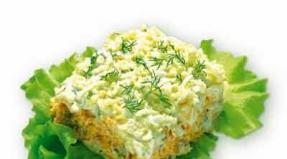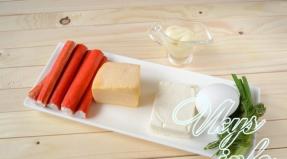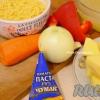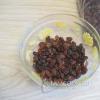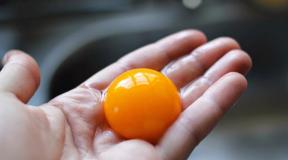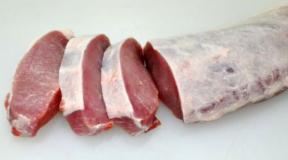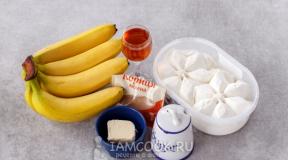Terms and conditions for the implementation of complex hot sauces. Comments
Traditionally, not only drinks are placed on the door shelf of the refrigerator, but also various sauces, as well as home-made preparations, without which we simply cannot imagine our favorite dishes. Unfortunately, after opening the package or uncorking the jar, their shelf life is significantly reduced. So that the products do not disappear, use our cheat sheet.
Why do open sauces and homemade preparations have a short shelf life?
The fact is that after opening the package, the products come into contact with the surrounding air. Under the influence of microorganisms, as well as the processes of oxidation and weathering, they deteriorate much faster, losing their original taste and aroma. Therefore, from time to time, they need to be checked and get rid of what can no longer be applied. So you not only protect yourself from the danger of eating stale food, but also protect the rest of the food in the refrigerator: over time, mold will form on stale sauces, the spores of which can spread to food stored nearby.
Of course, you can always see the expiration date of the product, but in most cases it is relevant only if the packaging is intact. In this regard, we have prepared a small list of the most common sauces and preparations with an indication of the approximate time of their storage in the refrigerator.
Note: Please note that these times are indicative. They are relevant only for products purchased in the store, and may differ depending on storage conditions.
Sauces

- ketchup- 6 months
- salad dressing- 6 months with tightly closed lid
- barbecue sauce- 4 months
- hot sauce (chili)- 5 years
- salsa- 5-7 days
- soy sauce- 2 years
- tartar sauce- 6 months
- mayonnaise- 2-3 months depending on expiration date
- mustard- 1 year
- horseradish- 3-4 months
Pickles

- capers- 1 year in a brine jar
- olives- 2-3 months in a jar of brine
- the rest of the pickles- 1 year with tightly closed lid
Jam
 Jam and jam- 1 year with tightly closed lid.
Jam and jam- 1 year with tightly closed lid.
Now you will always have a cheat sheet at hand, showing you when to give up certain foods that have been stored on the door shelf of your refrigerator for a long time. If some of them are about to expire, use them as soon as possible in your favorite dishes.
If you have questions or comments, please write to us. Use the comment form below or join the community discussion
industrial sauces
The food industry produces various sauces,] and many of them have a very spicy taste (tkema? Li, Southern sauce, curry, hunting, etc.). Serve them in non-| in large quantities to such dishes as kebabs, kebabs, etc., or used as additives in the manufacture of cooking sauces.
Use of industrial sauces on-.\ allows you to expand the range of sauces used in public catering.
Mayonnaise. They are used to prepare salads and other dishes, or derivatives are prepared based on them.
Sauce spicy tomato. Prepare it from fresh tomatoes| or tomato puree with the addition of sugar, vinegar, salt, onion, "garlic and spices. Used in the manufacture of meat,] fish and vegetable dishes.
Cuban sauce. It is produced by evaporation midors with sugar, garlic, salt, vinegar, spices.] Add to meat sauces and mayonnaises. The sauce can be used when serving meat, fish and vegetable dishes, as well! for dressing borscht and cabbage soup.
Ketchups. They are also made from tomatoes or tomato puree with various additives, but their tomato content is lower. To give the necessary consistency: thickeners (modified starches, etc.) are added to ketchups.
South Sauce. It has a very spicy taste and a strong spicy aroma. A sauce is prepared from soy fermented hydrolyzate with the addition of applesauce, tomato paste, liver, vegetable oil, spices, spices, onions, garlic, raisins, vinegar and wine (Madeira). Served with oriental dishes, added to red meat sauces and mayonnaise.
Sauce tkemali. It is prepared from puree of tkemali plums with the addition of basil, cilantro, garlic and red hot pepper. It has a sharp sour taste. Served with Caucasian cuisine.
Fruit sauces. They are prepared from fresh ripe apples, apricots, peaches and other fruits. Used in the manufacture and serving of cereals and flour dishes, or mayonnaise is added to the sauce.
In addition to ready-to-eat sauces, the food industry produces white sauce concentrates, mushroom sauces and their derivatives. They are a powder that is
Chapter 2. Sauces
before use, dilute with water in the right amount, and boil for 2-3 minutes, then add butter. The raw materials for sauce concentrates are dry meat, mushrooms, vegetables, sautéed flour, tomato powder, milk powder, sugar, salt, citric acid, spices, monosodium glutamate. They keep up to 4 months.
The quality of the sauce is determined by consistency, color, taste, aroma. When assessing the quality of sauces with fillers (onion, onion with gherkins, etc.), the shape of the cut and the amount of filler are taken into account.
Hot sauces with flour must have consistency liquid sour cream (liquid sauces), be elastic, homogeneous, without lumps of brewed flour and particles of unmashed vegetables. Medium-thick sauces used for baking have the consistency of thick sour cream. Thick milk sauce for stuffing should be similar to viscous semolina.
Vegetables that are part of the sauce in the form of a filler should be finely and neatly chopped, evenly distributed in the sauce, soft. There should be no film on the surface of the sauce.
The hollandaise sauce should have a smooth consistency, with no grains or flakes of curdled protein. There should be no grease on the surface of the sauce.
In polish and cracker sauces, the oil should be clear. The eggs for the Polish sauce are coarsely chopped.
Oil should not appear on the surface of mayonnaise; uniform consistency.
Vegetables in marinades should be neatly chopped, soft; horseradish for sauce - finely grated.
Sauce color should be characteristic for each group of sauces: red - from brown to brownish red; white - from white to slightly grayish; tomato - red. Milk and sour cream sauces - from white to light cream, sour cream with tomato - pink, mushroom - brown, marinade with tomato - orange-red, mayonnaise - white with a yellow tint. The color depends on the products used and the adherence to the technological process.
Taste and the smell of the sauce - the main indicators of its quality. For sauces on broths, a pronounced taste of meat, fish, mushrooms with the smell of browned vegetables and seasonings is characteristic.
Section III. Cooking technology
Red sauce basic and its derivatives must have! meat taste with a sweet and sour taste and the smell of onions, carrots, parsley, pepper, bay leaf.
White sauces in meat broth should taste boules; onov with a slight smell of white roots and onions, with a slightly sour taste. The taste of tomato sauce is pronounced sweet and sour.
Fish sauces should have a sharp specific smell of fish, white roots and spices.
Mushroom sauces - pronounced aroma of mushrooms.
Dairy and sour cream sauces should taste like milk and sour cream. You can not use burnt milk or very sour sour cream for their preparation.
Unacceptable defects in sauces with flour are: the smell of raw flour and stickiness, the taste and smell of burnt flour, the presence of a large amount of salt, the taste and smell of raw, tomato puree.
Egg-butter sauces and cracker sauce have a slightly sour taste and aroma of butter.
Marinades should have a sour-spicy taste, aroma | vinegar, vegetables and spices. The taste of raw tomato puree and too sour taste are unacceptable.
Mayonnaise sauce and its derivatives should not have a bitter taste and be too spicy, and horseradish sauce with vinegar1 should not be bitter or not spicy enough.
Store the main hot sauces in a water bath at temperatures up to 80 "C from 3 to 4 hours. The main sauces can be stored up to 3 days. To do this, they are cooled to room temperature and placed in a refrigerator at a temperature of 0-5" C. Sour cream sauces are stored at a temperature of 75°C for no more than 2 hours from the moment of preparation. Dairy liquid sauce - hot at a temperature of 65-7 (GS no more than 1-1.5 hours, since during long-term storage it darkens due to caramelization of milk sugar. Thick milk sauce should be stored chilled at a temperature of 5 "C for no more than a day. Dairy sauces medium density are not subject to storage, they are prepared immediately before use.Polish and cracker sauces can be stored for up to 2 hours.Oil mixtures are stored in the refrigerator for several days.To increase the shelf life, they are wrapped in parchment, cellophane or plastic wrap.Industrial-made mayonnaise is stored at a temperature 5°C for 3 months Mayonnaise of own production and salad dressings are stored in the refrigerator for 1-2 days, marinades and horseradish sauce - chilled for 2-3 days.
The value of vegetable dishes and side dishes in nutrition is determined primarily by the chemical composition of vegetables and, first of all, by the content of carbohydrates. So, dishes and side dishes from potatoes serve as the most important source of starch. A significant amount of sugars contain dishes from beets, carrots, green peas.
Especially great is the importance of vegetable dishes and side dishes as a source of valuable minerals. Most vegetables are dominated by alkaline ash elements (potassium, sodium, calcium, etc.), so dishes from them help maintain the acid-base balance in the body, since acidic elements predominate in meat, fish, cereals, legumes. In addition, the ratio of calcium and phosphorus in many vegetables is close to optimal. Dishes from vegetables, especially from beets, are a source of hematopoietic trace elements (copper, manganese, zinc, cobalt).
Although vitamins are partially lost during heat treatment, vegetable dishes and side dishes cover the main part of the body's need for vitamin C and a significant proportion of B vitamins. Parsley, dill, onion, which is added when served, significantly increases the C-vitamin activity of dishes.
Despite the low content and inferiority of most vegetable proteins, vegetable dishes serve as an additional source of them. With the joint thermal RB treatment of vegetables with meat, fish, eggs, cottage cheese and other protein products, the secretion of gastric juice almost doubles and the absorption of animal proteins improves.
Section III. Cooking technology
Chapter 3. Dishes and side dishes from vegetables and mushrooms
Flavoring, coloring and aromatic substances contained in vegetables contribute to increased appetite, allow you to diversify your diet.
Vegetable dishes are prepared for self-serving in the diet of breakfast, lunch or dinner and side dishes for meat and fish dishes.
Depending on the type of heat treatment, boiled, stewed, fried, stewed, baked vegetable dishes are distinguished.
Vegetable side dishes can be simple and complex. Simple side dishes consist of one type of vegetable, and complex ones consist of several. For complex side dishes, vegetables are selected so that they blend well in taste and color. With the help of a side dish, you can balance the nutritional value of the dish as a whole, regulate its mass and volume.
Meat dishes* are usually served with side dishes of any vegetable. At the same time, side dishes with a delicate taste are more suitable for lean meat dishes: boiled potatoes, mashed potatoes, vegetables in milk sauce. For dishes of fatty meat and poultry, it is better to serve more spicy side dishes - stewed cabbage, stewed vegetables with tomato sauce. Green peas, boiled potatoes, mashed potatoes are served with boiled meat as a side dish. For fried meat - fried potatoes, complex side dishes. For boiled and stewed fish - boiled potatoes, mashed potatoes. Side dishes of cabbage, rutabaga, turnips are usually not served with fish dishes.
Sauces with flour should have a smooth consistency, without lumps of flour and the formation of a film on the surface. To prevent the film from forming, the finished sauce is “pinched”, put pieces of butter or margarine.
In sauces without flour, in butter, there should be no flakes from curdled protein. In marinades, vegetables are cut into the correct shape, they should be soft, the taste should be sour-spicy. Color of sauces: red - from red to brown, white - from white to pale cream. Dairy and sour cream sauces have a color corresponding to the main product, with a slightly grayish tint. The taste of red sauces is sweet and sour, white sauces are pronounced staples.
Burnt flour, extraneous odors, excess salt and spices are not allowed.
Mayonnaise sauces should have a uniform consistency, without stratification of fat from the main mass.
Hot sauces are stored on a food warmer at a temperature of 70-80 ° C for up to 4 hours, sour cream - up to 2 hours, milk - 1.5 hours.
Milk sauce of medium density is not subject to storage.
Oil mixtures are cooled and used for their intended purpose.
Marinades are stored with the lid closed in a non-oxidizing container for 48-72 hours.
Control questions and tasks
1. On what basis are sauces classified?
2. For what purpose is flour passivated?
3. Make a flow chart for the preparation of the main red sauce.
4. What dishes are served with red sauces?
5. How are white sauces prepared in fish broth?
6. What products are included in the mushroom sauce?
7. What is the difference between Polish sauce and cracker sauce?
8. What products and in what quantity are included in the mayonnaise sauce?
9. Name the number of products needed to prepare milk sauce of different thicknesses.
DISHES AND SIDE DISHES FROM GRAINS, PULSES AND PASTA
General provisions
Most cereals are easily absorbed by the body, so they are widely used in baby food. Cereals in terms of biological value are arranged as follows: in the first place - buckwheat and oatmeal; in last place - semolina and rice. The usefulness and digestibility of cereals is higher if they are initially boiled in water, and then in milk, or porridge, served separately as a side dish. The energy value of all cereals is almost the same.
Least of all vitamins in semolina. The nutritional value of buckwheat is high. Cereals are an important source of protein. To replenish porridges with essential amino acids, they are combined with milk, cottage cheese, fish, meat, etc. Fat is added to improve the taste and appearance. The duration of cooking cereals is different, it depends on the type, degree of grinding of cereals, pre-treatment.
Bean and corn dishes are highly nutritious and high in protein, on average up to 25 %. The largest amount is found in soy. Dishes from legumes are more difficult to digest than from cereals. They are rich in carbohydrates - up to 45%, B vitamins and others, fats - up to 2%, contain the largest amount of potassium, which is 2-3 times higher than the content of other minerals, phosphorus, magnesium and iron.
According to the method of heat treatment, cereals are classified into crumbly, viscous and liquid.
Loose porridges are prepared by poaching and boiling in a large amount of water - a folding method. Porridges increase in volume and weight (Table 8).
Pasta is cooked in two ways: the first method is folding (cooking in a large amount of water, per 1 kg - 5-6 l of water); the second method is priming (per 1 kg - 2.2 liters of water).
Groats preparation. Barley groats are washed in slightly warm
water, "Hercules" and semolina is not washed.
Pearl barley is poured with cold water for 3-4 hours to speed up cooking.
Rice is washed in warm water several times, the first time at 40°C, the second at 50°C, and the third at 60°C.
Wheat groats are sorted, sieved and dried in an oven at a temperature of 100-110°C.
Millet is washed until the water becomes clear, the groats are scalded to remove bitterness.
Kashi
Loose porridge. The porridge should be cooked in a thick bottomed pan. Porridges are boiled in water or broth from all types of cereals. The prepared cereals are poured into salted boiling water, empty grains that have floated to the surface are removed. Initially, the porridge is stirred. Fat is added during cooking, then it is evenly distributed in the porridge. When the porridge thickens, cover it with a lid and bring to readiness on the edge of the stove or in the oven. Porridges are cooked in a bowl with small volumes.
Loose rice porridge can be cooked in a folding way (5-6 liters of water per 1 kg of cereal). Ready rice is discarded and washed with hot boiled water, then seasoned with melted butter or margarine.
When on vacation, porridge is placed in a pile on a plate, poured with fat or sprinkled with sugar. Boiled milk is served in a glass or milk jug. Porridges with fillers are prepared from all cereals, except corn. Porridges are prepared with bacon and onions, with champignons, mushrooms and onions, with carrots, onions and eggs, with mushroom sauce, pumpkin, cottage cheese, etc.
Buckwheat porridge with bacon and onions. Cook crumbly porridge, as indicated earlier. The bacon cut into small cubes is placed in a frying pan for heating, onions are added there, cut into rings or half rings, and fried until golden brown. Porridge is seasoned with lard and onions. Sprinkle with herbs on vacation.
Nanny(porridge dish). Buckwheat is sorted and washed. It is necessary to put salt into boiling milk, pour in cereals (for 1 kg - 3.2 liters of milk), bring to a boil, remove the foam. Stir occasionally, cook until fully cooked (30 minutes). The porridge is cooled to a temperature of 40-50 ° C, raw eggs are added, mixed. Fill pre-treated pig intestines, the ends of which are tied. Fry in a pan with lard until golden brown. On vacation, they are laid on a warmed dish, poured over with fat formed during frying, decorated with greens. Served with sauerkraut soup or as an independent dish. Vacation temperature 65°C.
Steam sauce. The main white sauce is seasoned with citric acid, boiled and boiled white wine is added. Served with stewed meat dishes, chickens, chickens, veal, etc. You can add a decoction of champignons to it.
White sauce with egg. Egg yolks are rubbed with margarine or butter, cream or broth is added and heated in a water bath (75-80 ° C), stirring continuously. This mixture, with stirring, is added to a hot white sauce (75-80 ° C), seasoned with grated nutmeg, citric acid, and salt. Served with dishes of stewed and boiled veal, chickens, chickens, lamb.
White sauce with vegetables. Carrots, parsley or celery and onions are cut into small cubes and sautéed for 3-5 minutes, a little broth is added and, having covered the dishes with a lid, simmer until tender. Finely chopped turnips and bean pods are boiled separately. Ready vegetables are added to the white sauce, boiled, seasoned with salt, citric acid and oil. Served with dishes of boiled lamb, rabbit, poultry, steam meat cutlets.
7. Requirements for the quality and storage of sauces
The liquid part of sauces with flour should be homogeneous, without lumps; the oil does not flake off. Side dishes introduced into the sauce should be soft, brought to readiness. The taste and aroma of sauces are well expressed.
Hot sauces with flour are stored on a food warmer in a sealed container for no more than 3 hours. Sauces are served for distribution in small batches for sale within 1-1.5 hours. Ready-made cold sauces are served for distribution in quantities that can be sold in 1-2 hours Keep in mind that hollandaise sauces are very unstable, so they should be stored in a water bath at a temperature not exceeding 80 "C.
In restaurants, ceramic and metal gravy boats of various capacities are used to serve sauces.
When culling, first determine the consistency of the sauce, pouring it in a thin stream and tasting it. Most sauces should have the consistency of liquid sour cream when hot.
Then they determine the color, taste and aroma, the consistency of the fillers, the shape of the side dishes and the composition (onions, cucumbers, root crops, etc.). Decisive in the assessment of sauces are taste and aroma. .
Inadmissible defects in sauces: extraneous unpleasant odors and tastes; the smell of raw flour and stickiness (the flour was not passivated); the smell and taste of burnt flour; watery taste and faint smell of meat, fish and poultry (weak broth); salting; smell and taste of raw tomato (badly sautéed tomato); the presence of lumps of brewed flour (flour passivation was brewed with very hot water and not filtered); separation of oil in sauces with egg-butter lezon; the presence of dark grains and a bitter aftertaste (burnt vegetables); poorly peeled vegetables.
Red meat sauces should have a rich meat taste, close to the taste of juice from roasting meat, with a sweet and sour taste, color from brown to brown-red, aroma of sautéed vegetables and spices. The smell of bay leaf should not prevail in the "bouquet".
In sauces with wine, the aroma of wine should be well expressed. Vinegar in sauces should not be felt. In onion sauces, the onion should be finely chopped. These sauces have a strong aroma of sautéed onions and spices. The roots in sauces with fillers should be soft. Overcooked or very dense vegetables are unacceptable.
A defect in mustard sauce is curdled grains of mustard. Fillers (vegetables, onions, capers, gherkins, etc.) should be evenly distributed throughout the mass. Meat white, tomato and sour cream sauces should have the taste of meat white sauces (in meat or chicken broth), with the aroma of sautéed white roots and onions. Steam sauce should have a pleasant sour taste. The consistency is elastic, like cream, without lumps and grains. The color is white or cream. The aroma is delicate, without the smell of bay leaf. The absence of citric acid in the steam sauce, white with egg is considered a defect.
The main defects of sour cream sauces are the use of low-quality sour cream - with high acidity, extraneous flavors or lack of sour cream. In addition, there may be defects depending on the flour passivation - a burnt taste, lumpiness. If the sauce is not boiled well, then the smell of raw sour cream is felt.
Fish sauces should have a characteristic, strongly pronounced taste and aroma of white roots, fish, spices. The main defect is the insufficient concentration of the broth. Fish sauces are bitter if the gills were not removed from the heads of the fish when the broth was boiled, or if the food waste was not washed well. Filler defects are: the presence of pitted olives, poor peeling of root crops, violation of the cut shape, the presence of unpeeled or overripe cucumbers. An incomplete set of fillers is evaluated as a marriage. A particularly frequent violation is the absence of white roots.
7.1 Processes involved in the preparation of the sauce
When preparing a white base sauce, the flour is sautéed with fat. Flour is added to sauces to give a certain consistency. Raw flour gives sauces an unpleasant stickiness and flavor. Therefore, the flour is passivated, i.e. dried without color change at 120C or with color change to light brown at 150C. A higher temperature is not used, as the flour acquires an unpleasant aftertaste of "burnt".
When flour is passed through, partial (at 120C) or almost complete (at 150C) denaturation of proteins occurs. They lose their ability to swell and, when combined with broth (water), do not form gluten.
The appearance of colored products and a specific smell is explained by the reaction of melanoidin formation.
Starch has a significant effect on the consistency of the sauce. During passaging, its dextrinization occurs, while starch grains are partially destroyed and lose their ability to gelatinize. Therefore, the sauces are elastic, non-sticky, with a pleasant aroma.
All processes associated with swelling and gelatinization of starch during further boiling of flour with liquid end after about 20 minutes, so sauces should not be boiled for a long time.
Passage flour can be with or without fat. To obtain fat passivation, the sifted flour is poured into melted fat and heated, stirring continuously. Fat ensures uniform heating of the flour and, upon subsequent dilution with broth, prevents the formation of lumps. Fat passivation is usually diluted with hot broth.
Dry, or fat-free, passivation is prepared by heating the sifted flour with a layer of more than 5 cm. To prepare a large amount of dry passivation, the flour is mixed with salt (up to 20% of the flour mass) and heated while stirring. Salt prevents the formation of lumps when breeding passivation with broth. Dry passivation is diluted with a small amount of broth cooled to 50 ° C to avoid premature gelatinization of starch and the formation of lumps.
Depending on the color, red and white passivation is distinguished.
7.1.1 Swelling and gelatinization of starch
Swelling is one of the most important properties of starch, which affects the consistency and shape, volume and yield of finished products.
Information service of Novopokrovskaya station
Sauces
Sauces |
|||
| 1. About sauces | 7. Fish broth sauces | ||
| hot sauces | 8. Mushroom broth sauces | ||
| 2. Broths for sauce | 9. Sour cream sauces | ||
| 3. Sauteing | 10. Dairy sauces | ||
| Sauces in meat broth | 11. Egg-butter sauces | ||
| 4. Red sauces | |||
| 5. White sauce | cold sauces | ||
| 6. Tomato sauce | 12. Cold sauces | ||
| 13. Ready mayonnaise sauce | |||
Sauces make it possible to prepare dishes from the same products that are different in taste and appearance. Sauces, which include fats and eggs, exceed the calorie content of culinary products.
The correct selection of sauces for dishes is of great importance, since the taste, appearance and nutritional value of food largely depend on it.
Using various sauces and spices, the main product of the dish is given one or another taste and aroma, while preserving or weakening the natural taste properties of the products, combining them either with spicy sauces, or with unleavened or fatty sauces.
Rusk and egg-butter sauce is served with asparagus, cauliflower. Steam sauce, meaty white with hollandaise sauce, served with chicken.
Many vegetables are cooked with milky sauces that enhance the flavor and nutrition of the food.
Fish broth sauces are for fish dishes, meat broth sauces are for meat dishes. Meat sauces are served with some fish and vegetable dishes.
Instead of sauce, natural meat products can be poured with meat juice or butter.
Sauces are divided into hot and cold.
Ordinary or highly concentrated broths (fume), as well as vegetable oil (olive, sunflower, cottonseed) are used as the basis for sauces.
Most hot sauces contain sautéed flour, which gives the sauce the right consistency. Few sauces are prepared without flour; the basis of these sauces is vegetable or butter.
To give the sauces a different taste, they add tomato puree, onions, mushrooms, capers, vinegar, grape wine and others.
From aromatic products, black and allspice, fresh and dried sweet peppers, bay leaves, garlic, parsley and other products are added to sauces.
Vinegar for sauces is better to use wine or fruit. In addition to vinegar, lemon, citric acid, brine of pickled cucumbers, tomatoes, soaked apples and other products with a sour taste - sorrel, sorrel, rhubarb, barberry can be used as seasonings; they can be added to the sauce in the form of puree, juice or decoction.
Sauce storage
hot sauces
before serving, store in a water bath (marlite) in a container with a lid. To prevent the formation of a film during storage, the sauce should be stirred periodically or pieces of butter should be placed on the surface of the sauce.
Sauces on meat broth, fish and mushroom broths, can be stored hot in a water bath for no more than 4 hours at a temperature not exceeding 85 degrees. Chilled and then reheated sauces taste better than hot sauces that have been stored for a long time.
Egg-butter sauces due to instability, it can be stored for no more than 1.5 hours at a temperature not higher than 65 degrees.
